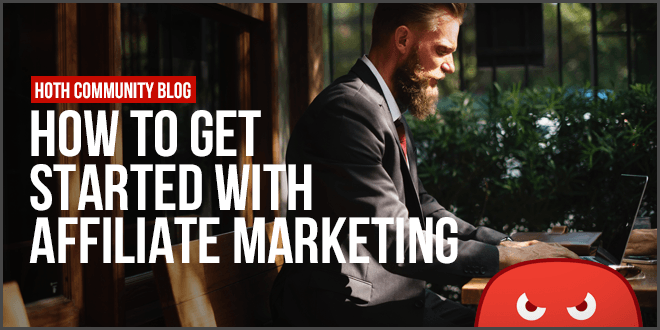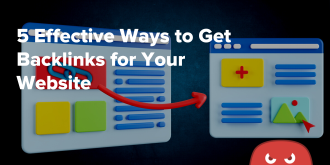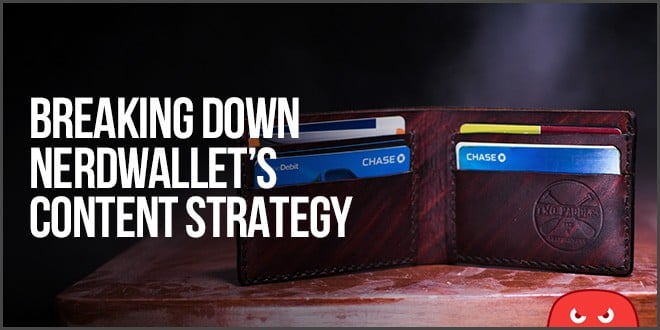Did you know you can make money online… Without ever creating any products?
The affiliate business model works like this:
The affiliate refers someone to seller of some kind, and if a sale is made the affiliate gets a predetermined commission.
It’s a classic business model of referring clients and customers. All the affiliate has to do is promote other people’s products and services – and they get a commission when a purchase is made.
Let me show you some examples:
Pat Flynn is an affiliate marketer that helps people learn about internet marketing, then recommends products for them to buy.
Another example is Rob Atkinson, who helps people find the right products to buy on Amazon through his website.
Both Pat and Rob had corporate careers, i.e. “Real Jobs,” before they learned about affiliate marketing. But both Pat and Rob make far more now as affiliate marketers than they ever could working for “The Man,” and they’re their own boss.
Pat runs a blog called Smart Passive Income and has a podcast of the same name. He makes most of his revenue from software and tool referrals, and it’s a staggering amount.
You can see real revenue data on his income reports, and he made over $64,000 from affiliate marketing in March of 2017.
Rob has a few niche websites that focus on product reviews. The websites help would-be buyers figure out what products to buy on Amazon. Rob made about $223,000 in 2016 just from Amazon, and is on target to make even more in 2017.
For most people, Amazon Associates is the easiest and best way to get started with affiliate marketing.
Here’s why: Amazon sells just about everything, for every kind of person, and people trust Amazon.
So all you have to do is have a way to refer people to Amazon with a hyperlink and you can make commissions.
Some people use a blog, others use YouTube, and others share links on social platforms like Facebook or Pinterest.
In this article, I want to give you the basics of how this all works, and how you can get started.
1. First, I want to show you a couple examples of Amazon Affiliate Sites that are done well, and the potential revenue that you can make with a simple product review website.
2. Next, I’ll tell you about another type of affiliate site where diverse products are marketed. These will be products outside of Amazon.
3. Last, I’ll mention the biggest downside to affiliate marketing, something that is often overlooked.
Let’s get into it:
1. Affiliate Site Examples
There are a few varieties of affiliate sites based on what they sell and the programs that they’re associated with.
Some affiliate programs are relationships with individual companies, service providers, and vendors, like web hosting or SAAS products.
Others are with big retailers and merchants, such as Amazon, Walmart, or Target.
Let’s look at a few specific examples.
Amazon Affiliate Site Examples
The most universal program for most people is the Amazon Associates program because Amazon has so many products available. Just about any blog out there can be monetized with Amazon Associates.
Let’s review three examples so you can get a feel for the kind of sites that are out there.
The first two are ones that you can go study, review, and reverse engineer, while the last is a site that cannot be revealed.
But the last site one that I own so I can reveal the earnings to give you an idea about the potential of these deceivingly simple sites.
The Wirecutter is a huge site that publishes gadget and electronics reviews. It was founded by an expert publishing veteran, Brian Lam, in 2011.
And in 2016 The New York Times bought the site (and it’s sister site, The Sweet Home) for a reported $30,000,000.
Yes, that’s the right number of zeros — $30 million.
The Wirecutter is considered the best of the best by many, including me. I look to them for best practices and ways to boost conversions on affiliate sites.
You can check out my video teardown and critique of The Wirecutter here.
They do a few things that really set them apart from most of the competition.
- The Wirecutter buys all the products that they review so they really do test the products and try them out. And buying the products gives them credibility over review websites that get free products in exchange for reviews.
- The Wirecutter hires great writers that often have a journalistic background. The content is better and readers can tell.
- The Wirecutter structures the reviews in a way that converts well. Each part of the review helps guide the reader to buy a product through credibility and knowledge. (In a future post, you can see the template for The Perfect Amazon Review.)
Outdoor Gear Lab reviews outdoor, camping, and sports products. The site was founded in 2010 by Chris McNamara, and grew out of a rock climbing site that he also worked on. Outdoor Gear Lab truly grew organically out of the gear review section of the rock climbing site that Chris was passionate about.
Outdoor Gear Lab follows along with the example of the Wirecutter because it also pays for all the products that are reviewed and doesn’t accept free product samples.
Outdoor Gear Lab has a very slick looking custom theme for the site. This is best showcased with their product comparison tables.
You can see the rating and summary for several products at a time so it’s easy to see which product is the best for you.
3. Secret Site: Project Go White Hat
I can’t reveal this site because it’s one that I’m personally working on, and it’s risky to share your money making sites in a public forum.
But it will give you an idea about what an Amazon Affiliate Niche Site can earn and how long it can take to achieve the earnings. It’s averaged about $8,700 per month over the last year which is a full-time salary for most people.
This particular site is one that was created with the goal of selling it.
I tell the whole story here, in the multi-part case study called Project Go White.
Here is the summary of the case study:
- I have an Amazon Affiliate site that was built in late 2014.
- The site was very profitable averaging over $8,700 per month profit.
- I wanted to sell it and to boost the monthly multiple. I needed to replace the Gray Hat links that worked so well with White Hat Guest post links, like the HOTH GP. Most website buyers will pay more for a White Hat site since the risk is perceived to be lower. (I won’t argue the merits of perceived risk, but that’s what the market dictates.)
- It took a while, but I replaced the links and put the site up for sale for over a quarter million dollars.
Want more examples of Amazon Affiliate sites and analysis? Check out my playlist on YouTube.
Let’s look at a super affiliate that works with a lot of individual companies, Pat Flynn, from Smart Passive Income (SPI)
Diverse Affiliate Programs
Pat Flynn is a master affiliate marketer. He started with the basic building block of affiliate marketing, niche sites.
Then, he shared the process on his blog and podcast creating “raving fans” as he calls them.
Eventually, his affiliate income surpassed his income from niche sites, and now the margin is huge. He makes in a month what most people earn in a year.
Pat uses services, software, and tools, and if he likes them, he recommends them.
It’s so simple.
Let’s look at his Resources page to see one way he can showcase his affiliate relationships.
He has the content divided up into three different sections since he has so many offers. The offers used to be on one single page, and that’s what I do on my blog, but SPI strategically organized the sections to be more effective.
The sections are:
- Most Recommended – Four offers are listed and are the ones that make the most money for SPI. They are Bluehost, ConvertKit, LeadPages, and the SPI WordPress theme. The highest converting offers are here, and I expect that Pat analyzed the data over the years to arrive at these four deals. Pat is an adviser to ConvertKit and LeadPages, implying he’s part owner of each company. So these affiliate deals are the ones that generate the most revenue and have strategic value for the SPI brand.
- Exclusive Deals – Bluehost is the only exclusive deal at the time of this writing. SPI drives so many new customers to Bluehost that it gave SPI a special discounted deal. You could do the same thing for almost any affiliate relationship—negotiate special terms if you have the leverage of driving a significant amount of business.
- Entrepreneurial Journey – This is the catchall section and basically what the Resources page used to be on SPI. It has courses, tools, services, apps, and helpful SPI content from the blog and on YouTube. The cool thing is that some of the resources are free, some are purely helpful content, and most of them are paid. The paid resources are the ones that are most important, of course, since they’re the ones that pay the bills for Pat Flynn.
Bluehost is still the largest single source of income for most months. Bluehost commissions were $30,000 to over $40,000 each month for the first four months of 2017.
SPI has other ways to push the affiliate deals that are more effective than the Resources page, including but not limited to:
- Blog posts, especially how-to content
- YouTube Videos, especially hands-on demos
- Podcasts
The how-to content and hands-on demo are most likely the best converting ways to get people to buy through your affiliate links.
2. Where To Find Affiliate Programs
When you start looking for them, you’ll see that there are many affiliate programs right under your nose.
Here’s a list of the some of the biggest programs out there:
- Amazon Associates – You know about this one already. You can monetize just about any blog or social media account with Amazon.
- Walmart Affiliate Program – Walmart is one of Amazon’s biggest competitors online and offline so the affiliate program is growing.
- ShareASale – ShareASale connects over 3,900 merchants with affiliates and have just about any product that you can imagine. The affiliate commissions at ShareASale are much higher than Amazon or Walmart, most of the time, but the conversion rates might be lower.
- ClickBank – ClickBank specializes in digital products and is one of the first programs that I learned about.
- Expedia Affiliate Network– Expedia is a great way to monetize the travel niche. The Hotels.com Affiliate Programme will be the best match for most bloggers.
There are a lot of affiliate programs out there working with thousands of websites and merchants.
You can check out more of them, such as Impact Radius, Commission Junction, and PepperJam, to see the breadth of products that you can promote.
Many vendors and merchants have affiliate programs that they run themselves. For example, The HOTH has one, I have one for my Five Figure Niche Site course, just about all hosting companies have an affiliate program, and the list goes on.
The best way to find the one-off affiliate programs is to think about the products you like to use. Then, you can reach out to the company to see if they have a program. If not, they still might work with you as a trial.
It’s great to recommend those products that you actually like because you’ll be able to authentically talk about them.
3. What About the Downsides of Affiliate Marketing?
I’ve just mentioned the great parts of the affiliate marketing business model, but there are some cons.
The biggest potential issue is that you, as the affiliate, do not control the affiliate program. That means the company can change the terms of the affiliate program.
Let’s look at a real example from Amazon.
Amazon changed the commission structure in March of 2017 after years of a consistent payout percentage. For some affiliates it was devastating to the bottom line.
Here is the old progressive commission rates based on the volume of products sold:
Here is the current commission rates based on the category of the product:
Amazon used to reward affiliates that sold a lot of products, then changed the rules of the game by considering only the category of the product.
It was out of the control of the affiliates.
For me, the change amounted to a 35% drop in revenue across two sites getting a cumulative 4,000 to 5,000 visitors a day on average.
- The previous commission rate was 8.5% on average because more than 3131 products were sold.
- The new structure pushed the effective commission rate to about 5.5%, determined by analyzing a year’s worth of historical sales data and current sales data.
It’s possible that a company could totally discontinue their affiliate program, too.
You can prepare for the risk as long as you know the possibility of changes to the program.
What’s Next?
Affiliate marketing is one of the most common ways people get started online. I think it’s the best way.
It has big advantages over some other business models.
For example:
- Start up costs are low. Normally, the costs are for hosting your website, which is far lower than if you’re trying to develop or manufacture a physical product.
- The start up timeline is shorter than some other business models. You can launch your site quickly, learn what works, and iterate. A software product might take long time to develop and test, then you still have to market it.
- You learn skills (SEO, marketing, copywriting) that are transferable to other business ventures and projects. Sometimes people get started with affiliate marketing, realize they love one aspect of it. Then they have the ability to change their job to something they enjoy more.
Remember there is risk in being an affiliate, just like any other business model. You are reliant on other companies and their affiliate programs.
If you’re interested in learning more, check out the Niche Site Process for creating an Amazon Affiliate site. Even if the Amazon Associates program isn’t the one you want to work with, you can still follow most of the steps and the concepts.
If you’re drawn to the diverse affiliate programs (i.e. the “Pat Flynn model”), then make a list of products that you like and check for existing affiliate programs. You can join up and start marketing them via a blog, YouTube, or email list.
Any questions? Let us know in the comments!









SUPERB ARTICLE, i m defenetly going to join this affiliate networks, thank you for sharing this.
Great points about the advantages of affiliate marketing. Although Amazon is a great way for beginners to start, their commissions are on the low side as you pointed out. Once someone gets a feel for how affiliate marketing works, they should move on to more lucrative affiliate commissions.
It takes the same amount of work to earn a 4% commissions as a 40% commission in terms of skills and effort.
Overall, I agree that affiliate marketing is a great way to start growing a passive income stream.
Thanks for your insights!
I really like the way Pat explain things in his videos. Also, his podcast is interesting a lot!
Yes, he hit on something good.
Great content. Reverse engineering an already successful affiliate website I think the best way to achieve great results. However, most people starting affiliate marketing choosing the “trial and error” method which is quite expensive.
I’m learning affiliate marketing myself, There are so many ways to do it – blog, social media, YouTube, etc… it’s amazing!
This is a very useful information. Well done to you for composing this. I receive a lot of questions from my team about this kind of statistics from the fear of losing their prospects. In essence what they need is numbers for assurance. There are other sites like Statistica but they charge to view and also not all the results are available. That’s why invidisual sites like yours come in useful for people with no budget. With great insights I would recommend your page to anyone.